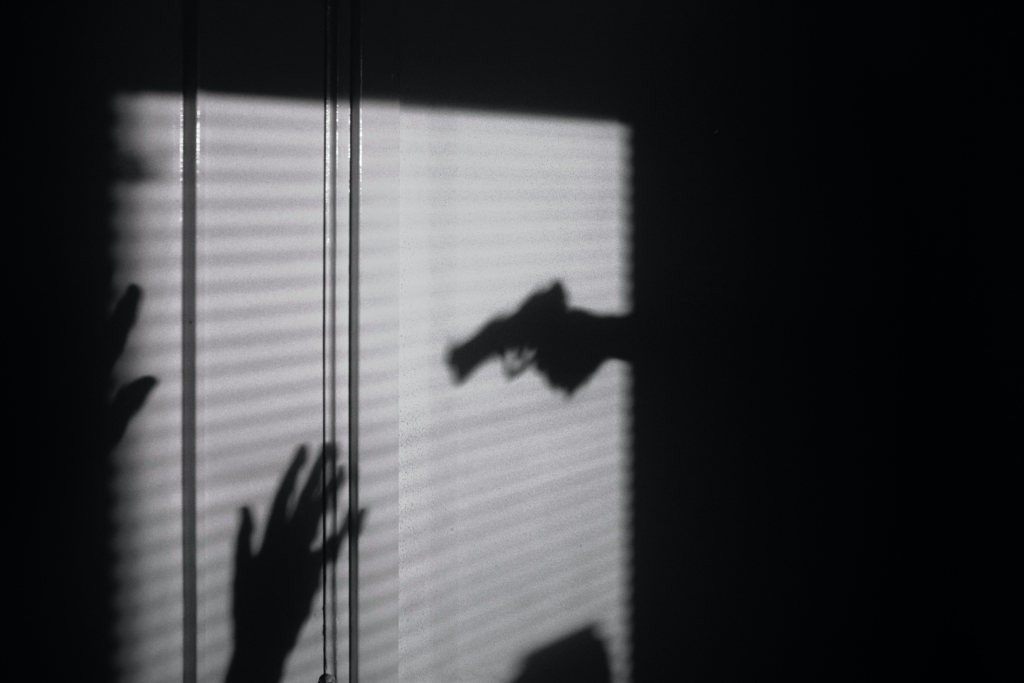
(February 22, 2021) The deathly combination of domestic violence and mass shootings never seems like a surprise when the male perpetrator of a mass shooting is found to have engaged in abusive behavior with women in his personal life.
In April 2020, Canada was collectively horrified by a mass shooting in Nova Scotia, in which Gabriel Wortman murdered 22 people and set 16 fires before being killed by police. Police later confirmed that Wortman’s violent rampage began hours after he assaulted and “forcibly restrained” the woman with whom he was in a long-term relationship.
There is a common perception that ‘crimes of passion’ drive the association between mass shooting and domestic violence, assuming perhaps that a person inclined to ‘lose their temper’ and become violent at home might experience the same loss of control in a public setting. However, according to recently released research by Dr. Jane Monckton Smith, of the University of Gloucestershire.
They don’t ‘just snap’ Smith said in a recent Tweet.
The 8-stage pattern begins with “pre-relationship history of stalking or abuse by the perpetrator.”
Once established, relationships develop quickly. Coercive control becomes the primary dynamic in the relationship. Triggers, or stressors, on that control result in the escalation of control tactics. Then, the victim has a ‘change of thinking’, deciding to lash back. This vengeful act is planned, and, finally, “the perpetrator kills his…partner, and possibly hurts others, such as the victim’s children.”
Ginger McPhee is the executive director of Chrysalis House, a women’s shelter in Kentville, N.S., and she says that this kind of catalyst is all too common.
“Knowing that the underlying cause of this is hatred towards women is something that we deal with in our work all of the time,” she told the CBC. “It’s a really troubling trend, and it is the base of how these situations escalate into something so extraordinarily horrific.”
Jenny Wright, from the Canadian Femicide Observatory for Justice and Accountability, confirmed that Wortman’s actions represent a much larger trend, saying “[v]iolent hatred of women was the catalyst for this mass shooting.”
Firearm use, mass shooting, and domestic violence are intimately linked, but despite ample case studies, the link has been historically understated.
“Between 2009 and 2018, at least 54 percent of mass shootings, defined as shootings in which more than three people are killed in one event, were related to domestic or family violence,” according to Domestic Violence, Firearms, and Mass Shootings, a 2020 study on the subject by forensic psychiatrist Liza H. Gold, published in the Journal of the American Academy of Psychiatry and the Law.
“Clearly, a propensity toward domestic violence is a strong predictor of ‘public’ violence later,” says Gold, whose study also clarifies that a significant number of women experience violence at the hands of an intimate partner outside the home as well. She writes, “Between 2011 and 2016, of all non–robbery-related firearm deaths in the workplace, 75.7 percent were female workers killed in circumstances of personal conflict. Of these, 90 percent were killed by a domestic partner.”
“Mass shooting” is legally defined as a single violent incident in which four or more people are killed. Mass shootings that take place in the context of a home or family “may not be considered or counted as a mass shooting.”
Firearm ownership is associated with higher levels of domestic but not nondomestic firearms homicide, indicating a unique dynamic between firearms, intimate partner violence and intimate partner homicide, says Gold in Domestic Violence, Firearms, and Mass Shootings.
It is clear that police forces would benefit from using assessment tools like Dr. Monckton-Smith’s eight-stage model in order to assess potential public safety threats.
Citing Marc Lepine, the perpetrator of the Ecole-Polytechnique murders, and Alex Minassian, accused of murdering 10 people and wounding 16 others in a van attack on Yonge St. in Toronto, Kaitlin Geiger-Bardswich, communications and development manager for Women’s Shelters Canada says that while violence against women is a clear predictor for mass killings, the issue is not discussed enough.
Nova Scotia killer Gabriel Wortman’s assault on his romantic partner was not an isolated incident.
According to Statistics Canada, over 99,000 Canadians aged 15 to 89 were victims of intimate partner violence in 2018, representing nearly a third of violent crimes reported to police.
Their data also showed that in almost 80% of the 945 intimate partner homicides that took place between 2008 and 2018, the victims were female.
Some activists urge caution in the way these models are applied. Julie S. Lalonde, an Ottawa-based women’s rights advocate points out that a major reason that women stay in abusive relationships is the fear that others may be harmed. She says that using the wrong language could reinforce a ‘victim-blaming’ attitude towards domestic violence, an attitude which is already a huge problem.
At the end of the day, however, Nancy Ross, assistant professor at Dalhousie University’s School of Social Work says interpersonal violence in all its forms thrives in silence and, if anything, mass shootings need further resources and attention.
Related reading
Alarming increase in violence against women May 22, 2020